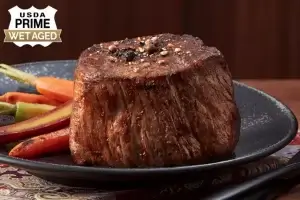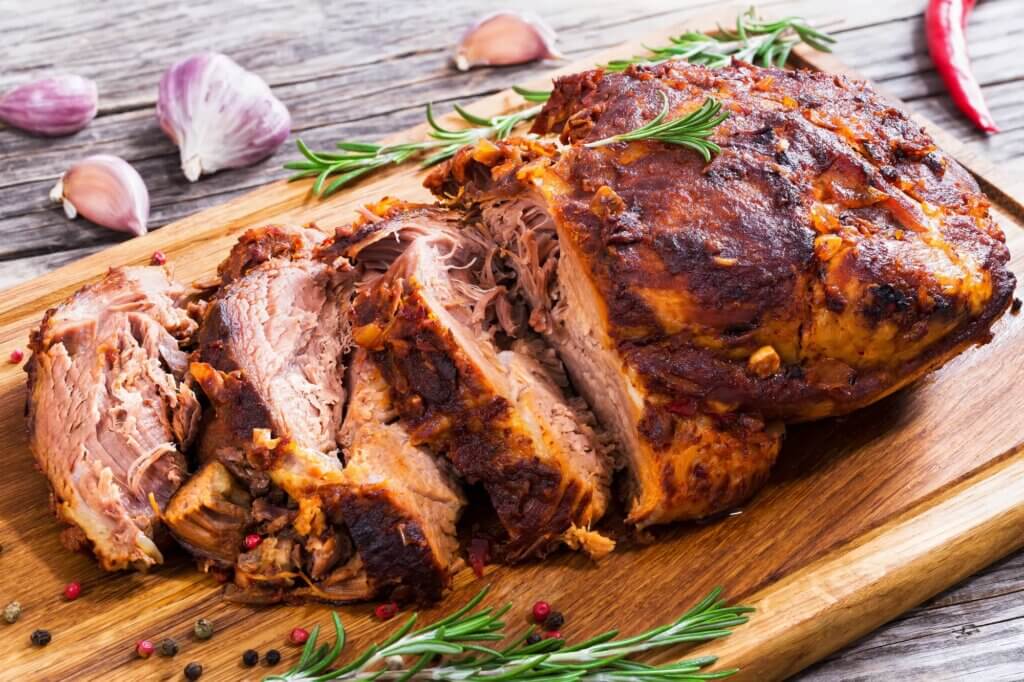
Pot roast sometimes gets a bad rap. Either you love it because you know how to cook it well, or you balk at the thought of it because you’ve been subjected to eating dry, overcooked, bland pot roasts in the past. It’s possible that, in either case, a shoulder roast was the star of the show, but knowing how to cook it right is the key to making a mouthwatering pot roast that you’ll want to eat every week.
Shoulder roast is an affordable beef cut that’s often transformed into pot roast, but it also has other uses, like pulled beef and braised boneless steaks. Learn what you can do with shoulder roast and some of the best methods for cooking it.
Understanding Shoulder Roast
If you’ve ever used a chuck roast to make pot roast, you’ve had a shoulder roast. A shoulder roast comes from the shoulder area of a cow, a heavily exercised area. Because of this, it works best as a roast cooked with low heat over a long period. Shoulder roast has a decent amount of marbling and lots of intense beefy flavor that really shines when it’s braised or slow-cooked.
Shoulder roast is also kind of underrated. Because it’s not necessarily meant for quick cooking, it’s not chosen nearly as much as, say, a ribeye, which you can fry up in a few minutes. The good news is that shoulder roast is usually a more affordable cut, and you can feed multiple people with one roast.
Selecting the Best Shoulder Roast
When choosing shoulder roast at the store, you should first know the other names it goes by. You might see it labeled as a chuck roast, pot roast, beef shoulder, or something similar, so don’t get too caught up on the name.
It’s even more important to know what to look for so you can make sure you’re grabbing the right roast and a high-quality roast. A shoulder roast is usually between 2-5 pounds. A fresh, quality roast should be bright red and gently firm to the touch. Also, look for marbling—white strips of fat—running through the roast. Sometimes, you’ll find shoulder roasts with a thick fat cap on one side, but it’s better to choose a roast with marbling running throughout. As the roast cooks, the fat breaks down within the meat, adding flavor and making it more tender.
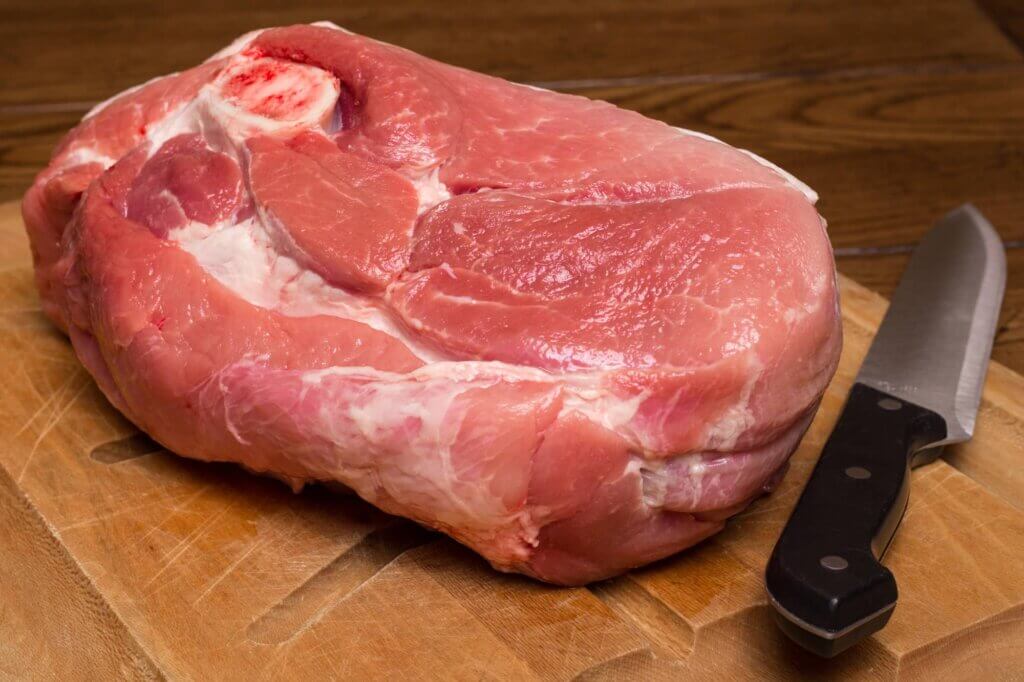
Preparation: Before You Cook
Before you cook your shoulder roast, take a few minutes to prepare it.
First, take it out of the refrigerator about 30-45 minutes before you’re ready to start cooking it. Remove any chunks of fat along the outer edges, as large sections of fat may not cook down all the way, even in a slow cooker. Then, pat the roast dry and salt all sides of the roast. Leave it at room temperature.
Just before you’re ready to cook, season the roast with your choice of seasonings. You can create a dry rub or blend a few herbs and spices together to make a sprinkle-on seasoning mix.
Alternatively, you can use a marinade for your roast. If using this method, marinate the roast for at least 2-4 hours in the refrigerator. Then, remove the roast from the marinade, pat it dry, and leave it at room temperature for 30-45 minutes before cooking. Finally, season the roast if you’d like.
If cooking in the slow cooker, you’ll want to sear the roast before cooking it. Do this by heating a tablespoon of oil in a large skillet over medium-high heat. Sear the roast for 3-4 minutes on each side. You can skip this step if you cook your roast in the oven, on the grill, or in an air fryer. We offer full details on each cooking method below.
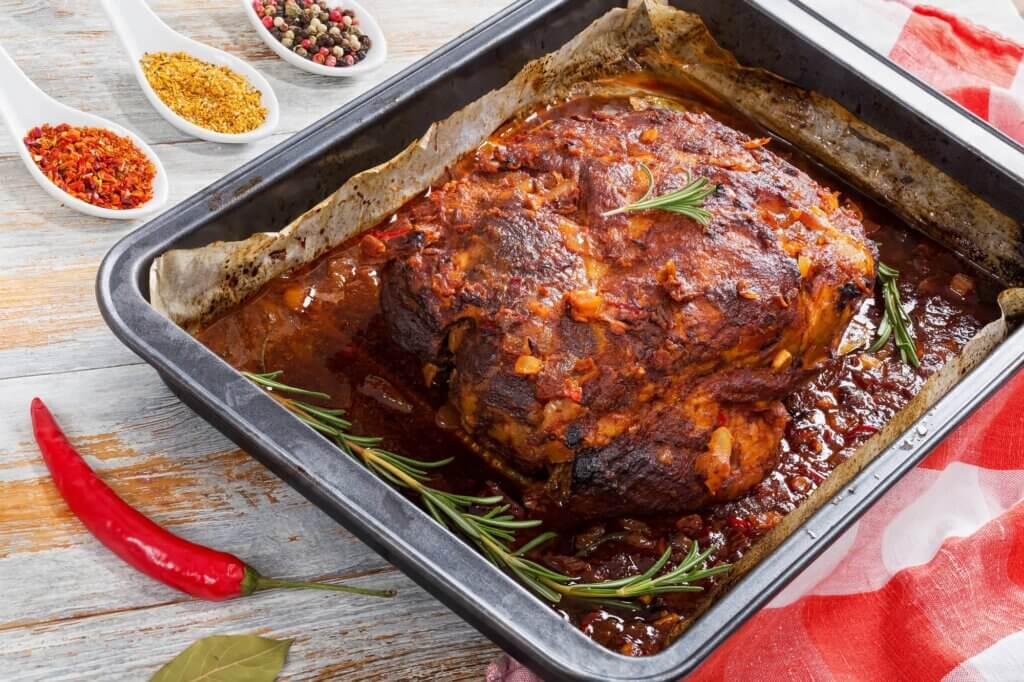
Cooking Methods Explained
Learn how to use the most popular cooking methods for shoulder roast in the following sections.
How to Cook Shoulder Roast in the Oven
Start by preheating the oven to 325°F. Prepare the roast with your desired seasonings. Place the roast on a roasting pan lined with foil. Cook on the middle oven rack for 2-3 hours or until the meat becomes fork-tender, pulling apart easily with a fork. Baste the roast with its juices every 20-30 minutes during the cooking process.
Turn on the broiler and broil the roast for 3-4 minutes until a crispy outer layer forms. Remove the roast from the oven and leave it at room temperature to rest for 10-15 minutes before slicing and serving.
How to Cook Shoulder Roast on the Grill
Season the roast while you preheat the grill to 325°F. Cook the roast over low heat for one hour. Then, cover it with foil and cook for another 1-2 hours, or until your desired temperature is reached. The roast should be fork-tender when it’s ready.
Sear the roast over high, direct heat on the grill for 3-4 minutes on each side. Then, rest it at room temperature for 10-15 minutes.
How to Cook Shoulder Roast in a Slow Cooker
Season the roast with salt, pepper, and minced onion. Heat a skillet over medium-high heat with a tablespoon of oil. Sear the roast on each side for 3-4 minutes. Then, transfer the roast to the slow cooker, and pour one cup of beef broth over the roast. Cook on low for 8 hours. The roast should pull apart easily with a fork when it’s ready. Rest the roast for 10-15 minutes before shredding or slicing.
How to Cook Shoulder Roast in an Air Fryer
Preheat the air fryer to 400°F. Season the roast as desired. Cook the roast in the air fryer for 5 minutes; then, flip it to the other side and cook for another 5 minutes. Turn the heat down to 325°F and continue cooking until a thermometer inserted into the thickest part reads 140°F. This should take between 20-60 minutes, depending on your roast’s thickness.
Rest the roast at room temperature for 10-15 minutes before slicing and serving.
Monitoring and Testing for Doneness
Use a thermometer designed for meat to test the shoulder roast’s doneness. Beef is safe to eat at a temperature of 145°F, so you’ll want to cook it to at least this temperature. However, shoulder roast reaches its most tender texture when you let it cook to 190-200°F, which is safe to do when using a slow-cooking method (slow cooker, oven, or grill).
Insert the probe of the thermometer into the thickest part of the roast to determine its temperature. Remove the roast from heat when it’s about 5 degrees from your desired temperature, as it will continue to rise slightly while it rests.
Resting and Carving Your Roast
After cooking your shoulder roast, it’s important to rest it for 10-15 minutes before carving it. The resting process gives lost juices time to reabsorb into the meat, enhancing its moisture and texture. If cooked to the right temperature, your roast will remain at a safe temperature while resting.
After resting the roast, carve it by slicing it against the grain. You can find the grain by looking for the fibrous lines that run through the meat. Cutting against those lines breaks up tough fibers, creating a more tender bite. Slice the roast into pieces about ½-¾ of an inch thick, only slicing as much as you’ll use immediately.
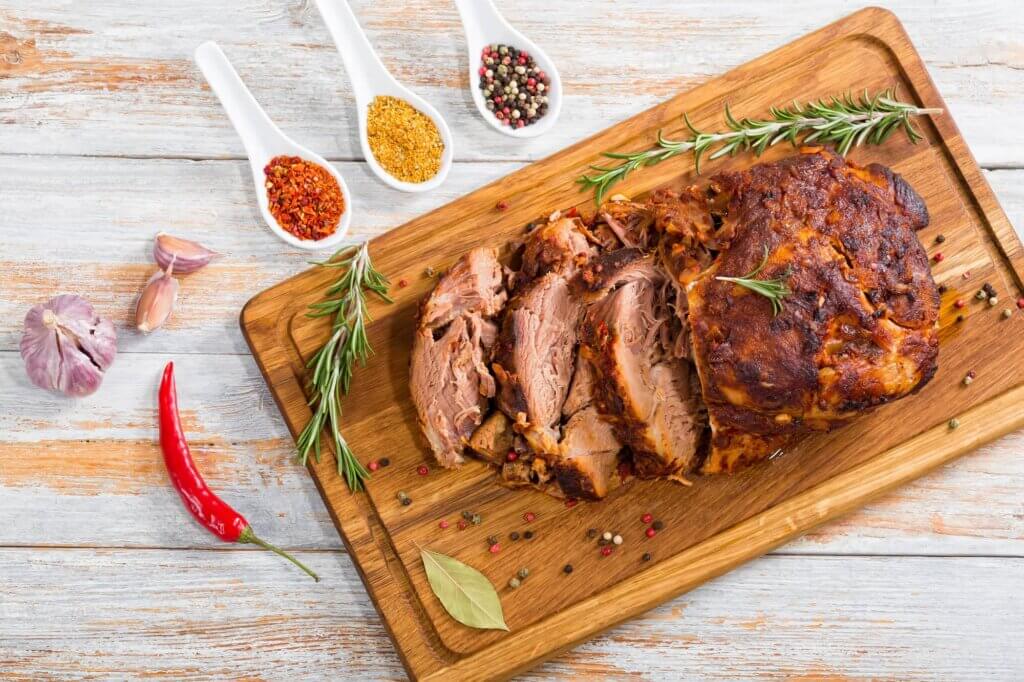
Tips and Variations
Now that you know all the basic cooking methods to use for shoulder roast, here are a few additional tips to help you elevate your dish or try something new:
- Consider cooking vegetables right along with your roast. This is a perfect trick to use when slow-cooking a shoulder roast, as your veggies, like potatoes, carrots, and celery, can cook right alongside your roast in the cooking liquid, infusing even more flavor into your meal. If you’re cooking in the oven or on the grill, consider making foil packets of vegetables to place next to your roast.
- Hang onto the leftover cooking liquids from the slow cooker or oven to turn it into gravy. Thicken the liquid by whisking in a cornstarch slurry. Bring it to a boil over medium-high heat for one minute. Then, reduce the heat, and simmer for 5-10 minutes until the liquid thickens to a gravy consistency.
- Instead of slicing your roast, shred it. Use the shredded beef for steak salads, sandwiches, or tacos.
Conclusion
If you’ve mastered cooking shoulder roast with the help of this guide and want to experiment with other roasts, browse Chicago Steak Company’s roasts, like the Bone-In Heart of Rib Roast and the Chateaubriand Tenderloin Roast. They’re all ready to deliver to your home when you order conveniently online from our website. Enjoy!


